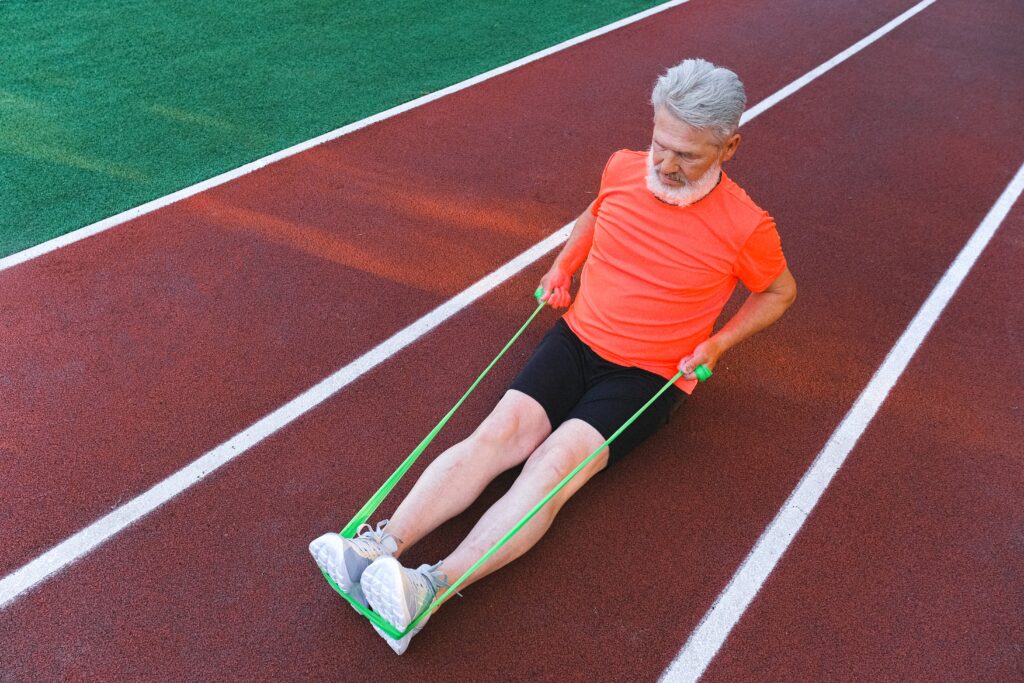
Resistance bands are versatile and affordable pieces of fitness equipment that can be used to add variety and challenge to your home workouts. They are also a great way to target specific muscle groups and improve your overall fitness. In recent years, resistance bands have gained immense popularity as versatile tools for enhancing home workouts. These stretchy bands come in various shapes, sizes, and levels of resistance, making them perfect for fitness enthusiasts of all levels. Whether you’re a beginner or an experienced athlete, resistance bands can add a new dimension to your home workouts. In this article, we’ll explore the benefits of incorporating resistance bands into your fitness routine and provide some effective exercises to get you started.
Resistance bands work by creating resistance when stretched or pulled. This resistance forces your muscles to work harder, which can lead to increased strength, endurance, and muscle mass. Resistance bands can also be used to improve flexibility and range of motion.
Benefits of Using Resistance Bands
Versatility: One of the greatest advantages of resistance bands is their versatility. You can use them to target different muscle groups and adjust the resistance level to match your fitness goals. Whether you’re looking to build muscle, increase endurance, or improve flexibility, resistance bands can accommodate your needs.
Portability: Resistance bands are lightweight and portable, making them a fantastic addition to your home gym. You can easily store them in a drawer or take them with you when you travel, ensuring that you can maintain your fitness routine anywhere.
Joint-Friendly: Unlike some forms of resistance training, using resistance bands is relatively gentle on your joints. The elastic nature of the bands provides a smooth and controlled resistance, reducing the risk of injury.
Cost-Effective: Resistance bands are cost-effective compared to other home gym equipment. You can get a high-quality set of bands for a fraction of the cost of traditional weightlifting equipment.
Effective Resistance Band Exercises
Now, let’s dive into some effective resistance band exercises that you can incorporate into your home workouts:
Banded Squats: Place the resistance band just above your knees, stand with your feet shoulder-width apart, and perform squats. The band adds resistance to the exercise, targeting your glutes and leg muscles.
Banded Push-Ups: Loop the resistance band around your back and hold the ends in your hands while doing push-ups. This exercise intensifies your chest and triceps engagement.
Banded Rows: Attach the resistance band to a sturdy anchor point, such as a doorknob. Hold the band in both hands, step back to create tension, and perform rows to work on your upper back and biceps.
Banded Deadlifts: Stand in the center of the band, holding the ends in your hands. Keep your back straight and perform deadlifts to engage your hamstrings, glutes, and lower back.
Banded Planks: Place the band around your ankles and get into a plank position. The band adds resistance, making your core work even harder to stabilize your body.
Banded Shoulder Press: Sit on a chair or bench, place the band under your feet, and hold the ends in your hands. Push upward to work your shoulder muscles.
Banded Leg Raises: Lie on your back, loop the band around your ankles, and raise your legs off the ground. This exercise targets your lower abdominal muscles.
Incorporating resistance bands into your home workouts can provide an excellent way to challenge your muscles, enhance your strength, and add variety to your fitness routine. The versatility, portability, and cost-effectiveness of resistance bands make them a valuable addition to any home gym. Whether you’re a fitness beginner or a seasoned athlete, these bands can help you achieve your health and fitness goals while reducing the risk of joint injuries. So, go ahead, grab some resistance bands, and take your home workouts to the next level!
Here are a few tips for incorporating resistance bands into your home workouts:
Start with a warm-up. This will help to prepare your body for exercise and reduce the risk of injury. Some good warm-up exercises include joint rotations, dynamic stretches, and light cardio.
Choose the right resistance band. Resistance bands come in a variety of strengths and thicknesses. When choosing a band for your workout, consider your fitness level and the exercises you plan on doing. If you are new to resistance bands, start with a lighter band and gradually increase the resistance as you get stronger.
Use the band correctly. When using a resistance band, make sure to keep your form proper. This will help you to get the most out of your workout and avoid injury.
Be creative. There are many different ways to use resistance bands in your workouts. You can use them to perform traditional exercises such as squats, lunges, and rows, or you can use them to create your own unique exercises. Wryll-AI Home Workout Trainer app will help you to achieve your fitness target with proper guidance .